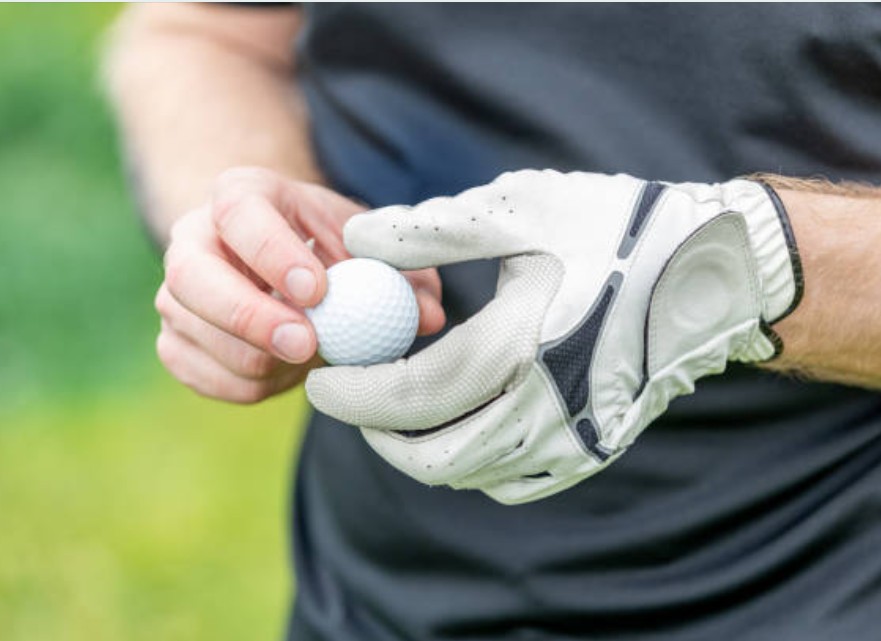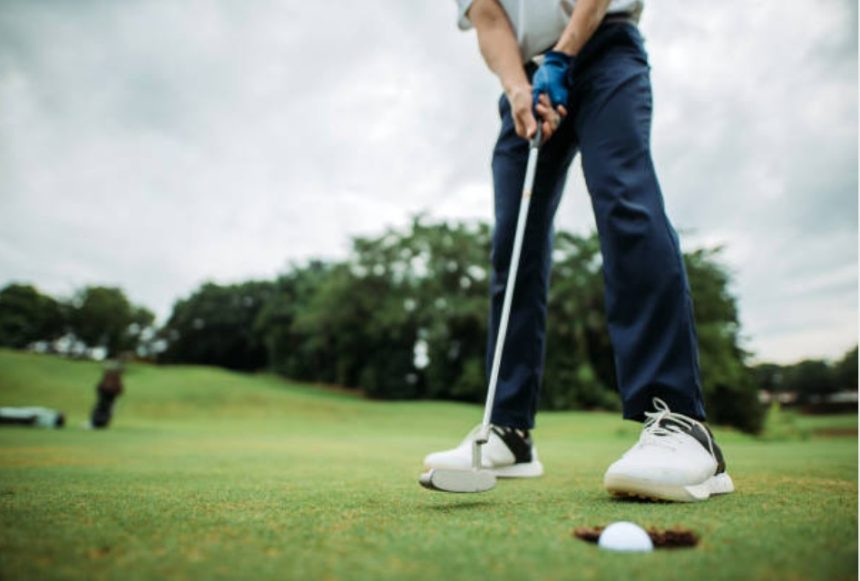If you’ve ever watched a professional golf tournament — or even a casual round at your local UK course — you may have noticed something peculiar: golfers almost always wear just one glove. Naturally, it leads many beginners and onlookers to wonder: “Why do golfers wear one glove?” Is it just tradition, or is there a specific reason behind this choice?
In this guide, we’ll break down the purpose, benefits, and science behind the one-glove habit — and explain why this seemingly small piece of gear plays a big role in golf performance.
Introduction – The Mystery Behind the One-Glove Tradition
Golf is a sport known for its traditions, subtle details, and precise mechanics — and the single-glove look is one of those long-standing practices that has stood the test of time.
Why It’s One of the Most Common Questions Among New Golfers
Newcomers often assume gloves are worn for protection or even fashion. But there’s a well-thought-out reason why nearly every golfer chooses to wear a glove on only one hand — and understanding that reason can help you improve your own game.
Is It Style, Strategy, or Something Else?
While some elements of golf attire are stylistic, the use of a glove is firmly rooted in functionality. It’s about grip, control, and comfort — not just how it looks on the green.
Why Do Golfers Wear One Glove?

Let’s get straight to it: the primary reason golfers wear a glove is to enhance their grip on the club, particularly on their lead hand, which is the one that exerts the most control during the swing.
Improving Grip on the Club
A golf glove provides extra friction between the hand and the club, reducing the chances of the club slipping, especially during powerful swings. This is particularly important in damp UK weather, where moisture can make grips slippery.
Reducing Friction and Preventing Blisters
Repeated swings can cause chafing and blisters, especially on the top hand, which is in constant contact with the grip. A glove acts as a protective barrier that cushions the hand during play.
Dealing with Sweat and Hand Moisture
On warmer days or during intense rounds, sweaty hands can lead to reduced grip security. The glove absorbs moisture and helps maintain a consistent grip throughout the game.
Enhancing Control and Consistency During the Swing
A glove helps the player maintain a light but secure grip, allowing for a smoother, more controlled swing. Over-gripping can lead to tension and inconsistent ball striking.
Quick Reasons Golfers Wear Only One Glove:
- Better grip and control
- Prevents blisters and skin irritation
- Handles sweat and moisture
- Supports a relaxed, consistent swing
- Adds comfort in all weather conditions
Which Hand Do Golfers Wear the Glove On — And Why?
The glove is almost always worn on the lead hand — the hand that is higher on the grip and closer to the target.
The “Lead Hand” and Its Role in a Golf Swing
For a right-handed golfer, the left hand is the lead hand, and vice versa. This hand is most responsible for guiding the club’s path and face angle, making it essential to maintain a strong, consistent connection with the club.
Right-Handed vs Left-Handed Golfers Explained
- Right-handed golfers wear the glove on the left hand
- Left-handed golfers wear the glove on their right hand
Why the Trailing Hand Usually Stays Bare
The trail hand (the lower one) plays a supporting role in the swing. Many golfers prefer to keep it ungloved to maintain a better feel for the club and the ball, particularly during shots that require more finesse.
Golf Gloves: Material, Fit, and Function
Choosing the right golf glove involves more than just size; materials and fit can also impact your grip, comfort, and performance.
Types of Materials

- Leather gloves: Soft, comfortable, and responsive — often favoured by tour players.
- Synthetic gloves: More durable and better in wet conditions.
- Hybrid gloves: Combine leather palm with synthetic backing for flexibility and longevity.
How a Proper Fit Affects Performance
A well-fitting glove should feel snug but not restrictive. Excess material can cause slippage, while a too-tight glove may tear or reduce circulation.
Why Golfers Remove the Glove for Putting and Short Shots
Many golfers remove their gloves when putting to enhance feel and touch. On the greens, sensitivity matters more than grip, so removing the glove helps with fine motor control.
Table: Golf Glove Types and Their Benefits
| Glove Type | Best For | Key Features |
|---|---|---|
| Leather | Dry weather, short rounds | Soft, responsive, high feel |
| Synthetic | Wet conditions, frequent use | Durable, water-resistant, budget-friendly |
| Hybrid | All-around performance | A combo of comfort and durability |
| Rain Gloves | Wet weather golf | Improved grip when wet |
| Winter Gloves | Cold UK mornings or evenings | Thermal protection with grip retention |
Do All Golfers Wear One Glove? What the Pros Say
Examples from PGA and European Tour Players
Most pro golfers wear a glove on their lead hand, including icons like Rory McIlroy, Tommy Fleetwood, and Jon Rahm. It’s the standard across the professional circuit.
Are There Players Who Wear Two Gloves or None?
While rare, some players use two gloves — typically in cold or rainy conditions. Others, like Fred Couples, occasionally play without gloves, but they are the exception.
Situational Use: Weather, Rain Gloves, or Cold Conditions
In the UK, where the weather is often unpredictable, some golfers switch to rain gloves or thermal gloves during winter rounds. These are worn on both hands but only when necessary.
Common Questions About Wearing One Golf Glove
Does Wearing One Glove Really Make a Difference?
Yes, particularly for beginners. The improved grip helps build confidence, especially during longer shots or powerful drives.
Can a Glove Improve My Swing?
While a glove won’t fix swing mechanics, it helps ensure your grip remains consistent, which can contribute to more predictable ball flight and reduced mishits.
What Happens If I Wear Two Gloves?
Wearing two gloves may reduce feel and feedback, especially on shots requiring touch. However, in poor weather, it can help maintain grip.
Is It Okay to Play Without a Glove?
Yes — it’s a personal choice. Some skilled players opt for bare hands for maximum feel, but most golfers benefit from the extra grip and protection of a glove.
Tips for Choosing the Right Golf Glove
Buying the right glove isn’t just about size — comfort, weather conditions, and playing style all matter.
How to Pick the Right Size and Fit

- The glove should fit snugly like a second skin
- Fingers shouldn’t bunch or have extra material
- The Velcro strap should fasten with minimal tension
How Often Should Gloves Be Replaced?
- Regular players should change gloves every 10–15 rounds
- If the glove loses grip or shows visible wear, it’s time for a new one
Care Tips to Extend Glove Lifespan
- Air dry gloves after use (avoid radiators or direct sunlight)
- Keep gloves in a glove holder or pouch
- Avoid over-saturating the glove during play
Golf Glove Buying & Care Tips:
- Choose gloves based on weather conditions
- Replace gloves regularly for the best grip
- Always carry a spare in your golf bag
- Let the gloves air dry after each round
- Store properly to prevent warping or cracking
Conclusion – A Small Accessory That Makes a Big Difference
So, why do golfers wear one glove? The answer is clear: for grip, protection, and consistency. It’s a small, often overlooked accessory that can have a surprisingly big impact on your performance, especially when it comes to comfort, control, and preventing injury.
Whether you’re just starting your golfing journey or working to improve your game, investing in the right glove for your lead hand can give you that extra edge, especially when you’re battling wind and rain on a classic UK links course.






